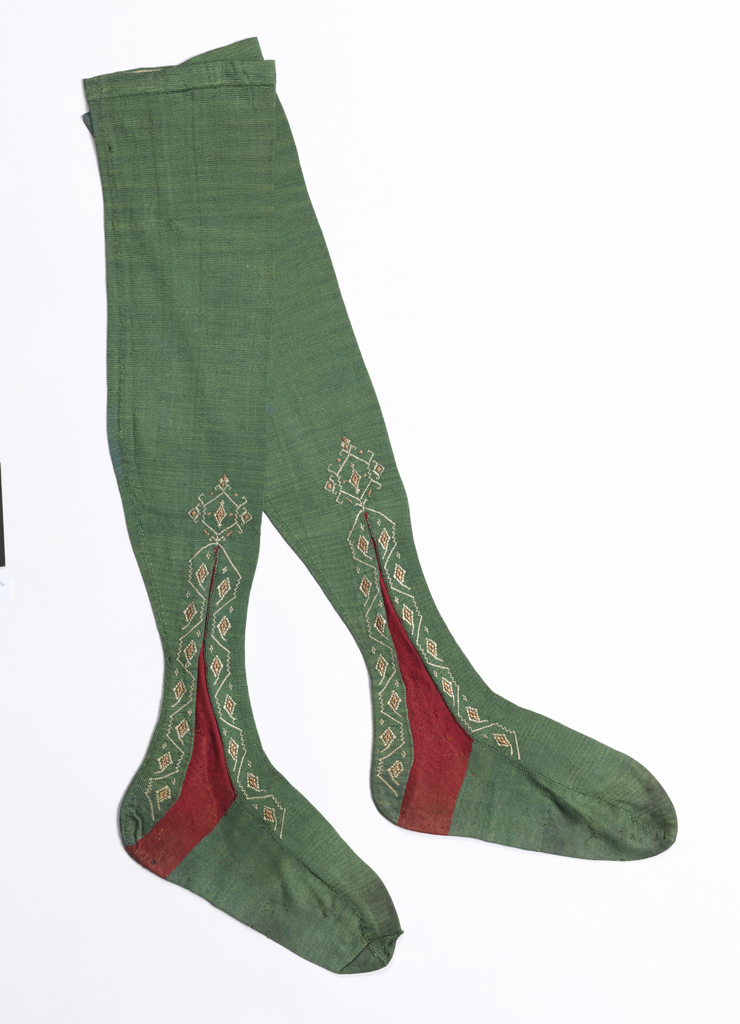Relatively little is known about this pair of men’s silk stockings. The donor of the stockings, Richard Greenleaf, identified them as being French and dating from the late eighteenth or early nineteenth century. But the most striking thing about the stockings is their decoration.
By the early eighteenth century, men of all social classes wore close-fitting breeches and stockings. The shaping of most stockings was accomplished by the insertion of triangular gussets (known as “clocks”) on both sides. The fashion for decorating clocks and areas bordering the clocks seems to have emerged during the reign of James I, and it was adopted by women as well as men.[i] Generally, this decoration took the form of embroidery in contrasting thread on otherwise plain white silk stockings. But sometimes, as was the case with our green-and-red stockings, the decoration was much more elaborate. Plain or fancy, decoration of the clocks was clearly intended to draw attention to the wearer’s calf. By the 1770’s, this focus on the calf led some men to wear pads on the inside of their stockings to enhance the shape.
By the middle of the eighteenth century, fashionable upper-class Frenchmen seem to have been overcome by a sense that the extreme formality demanded by dressing for court functions was increasingly anachronistic. The French were also in the grip of a wave of “Anglomania” which extended to a preference for the greater comfort afforded by English “country” clothing, a trend which favored a reversion to plain stockings.
The French Revolution brought with it profound changes in men’s fashion. The costume of the sans-culottes, the working-class Frenchmen who were ardent and sometimes violent supporters of the Revolution, did not include breeches; instead, they wore loose, ankle-length pants. For them, breeches were a symbol of wealth, and, once the Terror began, a man in breeches was potentially a man under suspicion of counter-Revolutionary sentiments. Not surprisingly, many Frenchmen, regardless of their politics, adopted ankle-length pants during the Revolution. Even after the end of the Terror and a return to more ordinary patterns of life, men’s attire continued to be more sober in style. The trend toward long pants or, alternatively, breeches with high boots continued. Because a man’s calf was no longer visible, the fashion for decorated stockings for men faded.[ii] But they didn’t disapper: women, who were beginning to show a daring glimpse of ankle beneath the long skirts of their dresses, continued to wear stockings well into the nineteenth century.
Nancy Olson is a student in the Parsons Masters program in the History of Decorative Arts and Design. She is delighted to have the opportunity to use the study of material culture as a means of gaining a deeper understanding of our collective history.
[ii] An exception to this categorical statement should be allowed. In the last decade of the eighteenth century and the first decade of the nineteenth century, a combination of breeches and half-boots, ending at the widest part of the calf, enjoyed a brief popularity. A man sporting half-boots would have exposed the upper four or five inches of his stockings.
